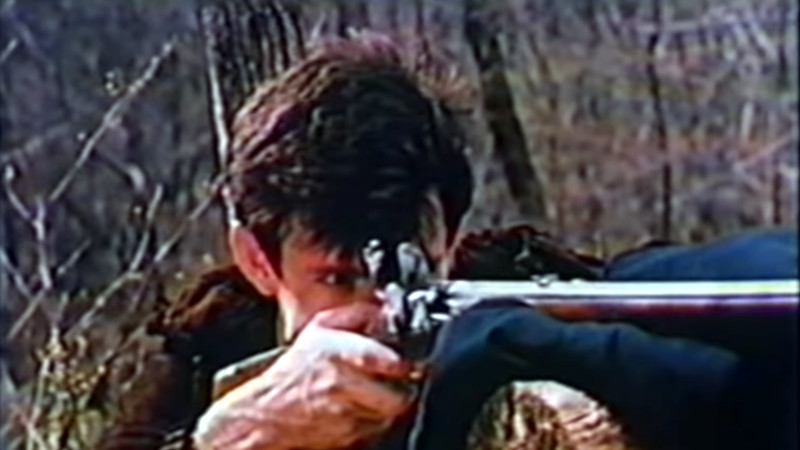A modern firearm is likely to be mass-produced using high-precision machine tools, and with a uniformity to the extent that parts from one can be interchanged with those from another. This marks a progression of centuries of innovation, in gunsmithing, in machine tooling, and in metallurgy. In the 18th century there was little of the innovations found in a modern weapon, and a rifle would have been made entirely by hand through the work of a master gunsmith. The video below the break is a fascinating 1969 film following Wallace Gusler, the gunsmith at the museum town of Williamsburg, Virginia, as he makes an 18th-century muzzle-loading flintlock rifle from raw materials. It’s a long video, but it leaves nothing out and has a really informative commentary we’re told from the gunsmith himself.
The film opens with a piece of wrought iron being forged into a long strip. We’ve talked about wrought iron as a difficult-to-find blacksmith’s material before here, so this immediately makes us curious as to what material the current Williamsburg gunsmiths use. The strip is formed round a mandrel and laboriously forge-welded to form a rough tube, before being bored with a series of drills and then rifled with a toothed slug. The finishing is done by had with a file, with the rough tube being filed to an octagonal shape.
We follow through all parts of the rifle, the breech plug with its tang for mounting the rear of the barrel, and then the proofing of the barrel with four times its usual charge. Having made the barrel he turns to the lock, and aside from the major parts being made from wrought iron and case-hardened in a sealed crucible full of charcoal powder we see the different techniques required to work with spring steel. Aside from the craftsmanship on show it’s a full introduction to 18th-century weapon technology, as these represented the peak of what was available at the time.
The iron parts complete, the rifle is by no means finished. The stock and rifle furniture are crafted from a single piece of maple wood, carefully shaped over several different stages of the weapon’s construction. all metal parts are recessed flush into the wood, and all the brass components are made by casting rather than from brass sheet. We see the mould being prepared and the molten brass being poured, and once the various parts have been mated with the woodwork we see the process of hand-engraving. Finally the wood is finished with a solution of iron filings in nitric acid, and oiled with linseed oil for a beautiful finish.
As someone familiar with the blacksmith’s art, the thing that comes through most strongly from this film is not merely the level of skill but the breadth of skills it shows An 18th century gunsmith was at the same time a master blacksmith, woodworker, brass worker, engraver, and artist, and it’s no surprise that these rifles were as highly prized in their day as they are now. Mr. Gusler is at the peak of all these crafts, and we’re privileged that we’re able to watch him at work in such detail. In the film he’s a young man, and a quick Google search finds that his career at Williamsburg lasted into the 21st century He’s clearly remained the pre-eminent expert on the American long rifle, and we can find articles written by him in recent years. Our thanks to [Ken Boak] for the tip on this one, it’s been a treat.
















I have our family musket. Unbelievably heavy. We have never fired it. Will be interesting to see how it was made. Takes a lot to fire just one shot. We have a powder horn also.
I doubt an Arduino or even a 555 chip was used in its production :)
Maybe if you grind them up and add saltpeter and sulfur it can be powered by them.
That was a truly wonderful video. If you’re ever in Vermont, go check out the American Precision Museum, they have a gun stock copy mill and gunlock mortising machine from the 1800s. I’m sure a few other gun related machines I’ve missed.
This is fantastic! Thanks Jenny!
Thanks. I found that very interesting. A lot of work went into making a one of a kind rifle. I bet it was a really good feeling to fire it and see the results on paper and then hold in your hands something you made from the ground up. Gives one a real appreciation of the gunsmith of yesteryear. Craftsman extraordinaire.
Everything about that was spectacular. I love when the craftsman would speak (as opposed to the narrator) and at something like “the most aggravating part of this is fitting the hinge” or whatever.
Also I love the style of documentary where they actually just be quiet for a while and let you see the guy just pounding away on the metal.
Seconded all! Is it just me, or is the host just a little too fixated on the linseed oil?
omg
Because I misheard 43:15 as “since the recoil from firing the gun is take by the wood around the _tank_” I dived into a rabbit hole about the etymology of the armored vehicle and the RPG role and where always wondering, whether there is maybe a hidden connection m(
But it is “tang” as in fishing rod?
“Tang” is usually the part of a component that is recessed into an assembly to increase durability and rigidity, such as in a knife where the blade material extends fully or partially into the grip and pommel.
Mesmerizing.
As a blacksmith, I would add: each smith (gun, lock, copper, silver, etc.) also makes their own tools; chisels, dies, machines as well. Inventing as they go. How cool is that?